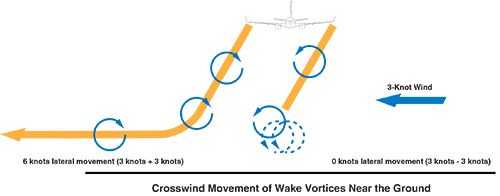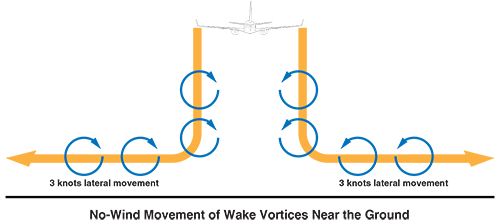In no-wind situations as pictured in the diagram at top right, wake vortices tend to move outward laterally across the surface at about three knots. However, when light crosswinds are present, the downwind vortices will move at three knots plus the wind velocity. The upwind vortices, meanwhile will stay over the runway, as shown in the diagram at bottom right. This behavior has obvious implications for operations in crosswind situations on both the original runway and on downwind, parallel runways.

In our experience, vortices can remain energized for longer than the FAA-standard three minutes.




